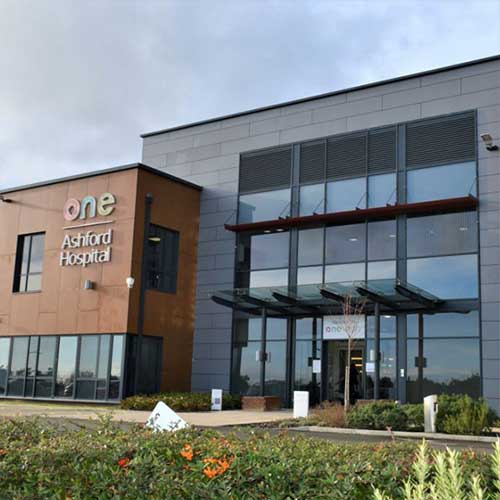Hysteroscopy
A hysteroscopy is a procedure whereby a surgeon looks inside your uterus using a narrow telescope with a camera. This enables your surgeon to investigate concerns, diagnose conditions and potentially treat you at the same time.
There are many situations in which your doctor may recommend this procedure. It can be used for either surgical or diagnostic purposes. Most often a hysteroscopy is recommended to:
- Investigate abnormal bleeding (heavy periods, bleeding between periods, post-menopausal bleeding)
- Remove abnormal growths (fibroids or polyps)
- Retrieve lost IUD coils
- Investigate if there are any physical issues preventing you from conceiving
- Investigate causes for recurrent miscarriage
- Treat scar tissue in your uterus lining
Hysteroscopy Advantages and Disadvantages
Advantages
- A hysteroscopy can be performed in an outpatient setting with no anaesthetic (meaning shorter hospital time)
- You may be able to be diagnosed and treated in the same operation
- Shorter recovery time
Disadvantages
- Risk of possible complications (damage to the cervix or womb)
- Sometimes performed without anaesthetic (can make some people anxious)
- Possible cramping following the procedure
Procedure
A hysteroscopy is performed in an outpatient or day-case setting, roughly taking between 5-30 minutes, depending on what it is the doctor is looking for.
As a hysteroscopy is a relatively quick procedure that does not involve making cuts or incisions in the skin, it is not usually carried out under anaesthetic. Taking over the counter painkillers about an hour before the procedure can help ease some discomfort. Longer and more complicated procedures, such as the removal of fibroids or polyps, can be done under general anaesthetic where you will be asleep during the operation.
During the Procedure
During the procedure, the doctor will dilate your cervix, although this is not always necessary. The vagina and cervix are then cleaned with an antiseptic solution and the hysteroscope is passed into your uterus. You may experience some cramping and discomfort as it passes through your cervix. Fluid is gently pumped into the uterus to make it easier for your doctor to see inside. The camera will then send pictures to a monitor so your doctor can spot any irregularities.
If you are having a hysteroscopy to treat a condition such as fibroids or polyps, fine surgical instruments can be passed along the hysteroscope. They are then used to cut or burn away the abnormal tissue.
Hysteroscopy can be uncomfortable and sometimes painful. You may experience some period pain-like symptoms whilst the hysteroscopy is being carried out, so make sure you let your doctor know and they can provide pain relief when necessary.
You will be given a date for a follow-up appointment and be told when and how to expect your results if you have had any samples taken (this can take up to several weeks and could arrive by post or phone call).
Hysteroscopy Aftercare
Generally following the procedure, depending on whether you had anaesthetic, you can return home the same day.
You may have some spotting or bleeding from your vagina, but you can use sanitary pads until the bleeding stops; this is completely normal nothing to worry about unless it is heavy. You may also feel some discomfort which can be alleviated with over the counter medication. Consult your doctor before taking though.
It is a good idea to rest following your hysteroscopy procedure. You can eat and drink as normal straight away, but avoid having a bath for 24 hours (showering is fine) and avoid having sexual intercourse for a week, or until the bleeding stops.
Complications of a Hysteroscopy
A hysteroscopy is a relatively safe procedure with complications appearing in less than 1% of cases. However, as with any type of surgery, complications are possible and can include:
- An adverse reaction to the anaesthetic
- Infection, tenderness and inflammation
- Injury to the cervix, uterus, bowel or bladder
- Intrauterine scarring
- A bad reaction to the fluid used to enlarge the uterus
- Fever
- Extreme abdominal pain
- Heavy vaginal bleeding or discharge
Need Help?
At One Healthcare we can book you in to see a specialist Gynaecologist for an initial consultation, usually within 48 hours. A hysterectomy procedure is available at One Ashford Hospital in Kent and One Hatfield Hospital in Hertfordshire.
You can use your private medical insurance or pay for your Hysteroscopy treatment. We offer competitive, fixed price packages. If you are using your health insurance, please contact your insurer first for approval and let them know you’d like to be treated at One Ashford Hospital
Why One Ashford Hospital
- Access to leading Consultants within 48 hours*
- Competitive fixed-price packages
- Modern purpose-built hospital
- Private, spacious, ensuite rooms
- Specialist Physiotherapy and nursing teams
- Little waiting time for surgery
- Calm, dignified experience
*Dependent on Consultant availability
**Terms and conditions apply
Contact us and find out more
If you are based in and around Kent, Maidstone, Dover, Canterbury or Folkestone and would like to visit the One Ashford Hospital please click hereGynaecology Pricing Guide at One Ashford Hospital
This is a list of guide prices for some of common Gynaecology treatments and procedures.
| Treatment | Guide Price |
|---|---|
| Hysterectomy (Total) | £6,950 |
| Hysteroscopy | £3,355 |
| Repair of Prolapsed Vagina | £7,750 |
If treatment for your condition is not listed above, contact the hospital on 01233 423000 where a member of our Reservations team can provide you with a quote.



 One Ashford
One Ashford One Hatfield
One Hatfield